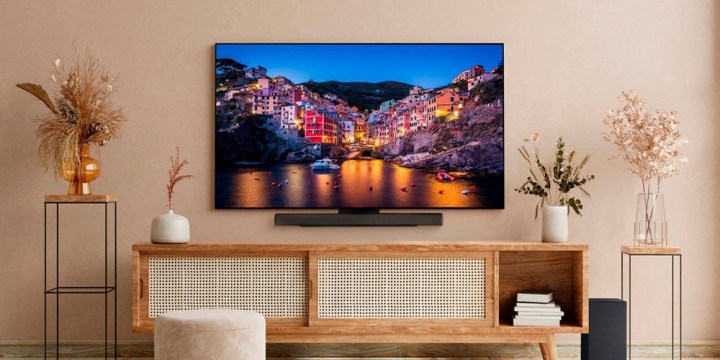
One of the best parts about buying a modern TV is it’s pretty hard to make a bad purchase. There are numerous sets available from some of the biggest names in the business, along with plenty of sizes and display technologies to choose from. As for the latter consideration though, if you’re all about color accuracy and the kind of inky black levels that bring new meaning to the word “contrast,” you should definitely be looking at OLED TVs.
For a long time, the OLED marketplace was dominated by LG, and still is to some extent. But since Samsung and Sony started getting into OLED and QD-OLED sets a couple years back, there’s now a number of other models to consider when shopping around. Not to worry though, because as vetted AV experts, we’ve already done the hard work of hand-picking and testing several different OLEDs, and have compiled our findings in this best OLED TVs roundup.
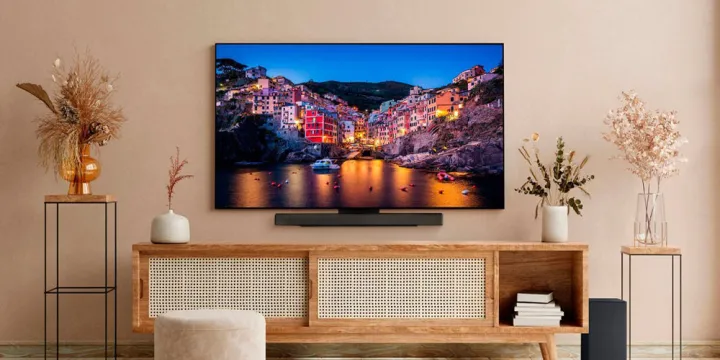
LG
LG C3 Series OLED
The best OLED overall
Pros
- Excellent colors and contrast
- Impressive brightness
- Great HDR performance
Cons
- webOS 23 isn’t the easiest to navigate
Man, it was a tough call for the 2023 “Best Overall OLED” laurel, but after weighing the options and getting into the nitty-gritty of specs and cost, we believe the best OLED for most folks is undoubtedly the LG C3. Available in 42-, 48-, 55-, 65-, 77-, and 83-inch sizes, the LG C3 delivers an amazing picture that reaches some pretty impressive peak brightness levels, but more importantly, when it comes to both HDR and SDR performance, the C3’s color and contrast capabilities are simply through the roof.
As far as digital hearts and lungs go, the C3 is powered by LG’s revamped a9 AI Processor Gen6 (also found on the LG G3), which acts as the catalyst for features like AI Super Upscaling 4K and AI Picture Pro. The C3 also includes LG’s latest take on its smart TV platform, webOS 23, for all your Netflix and Disney+ streaming needs. The UI is still a bit cluttered (something we’ve found irksome for a few years now), but distracting advertisements are easy to forgive when your OLED dishes out 4K at 120Hz across all four HDMI 2.1 inputs.
What’s the difference between the LG C3 and the premium G3 model below? The latter employs Micro Lens Array technology as part of its engineering, which allows the G3 to achieve higher peak brightness levels than the C3. Oh, and the G3 is meant to be hung on a wall (it comes with an LG wall mount), so it doesn’t come with a stand, although you can purchase one separately.
Like any OLED TV, the LG C3 is going to look its best in dark rooms, but if your viewing space is troubled by ambient lighting, the C3 does an excellent job at handling reflections and looks great from a number of vantage points throughout a larger room.

LG C3 Series OLED
The best OLED overall
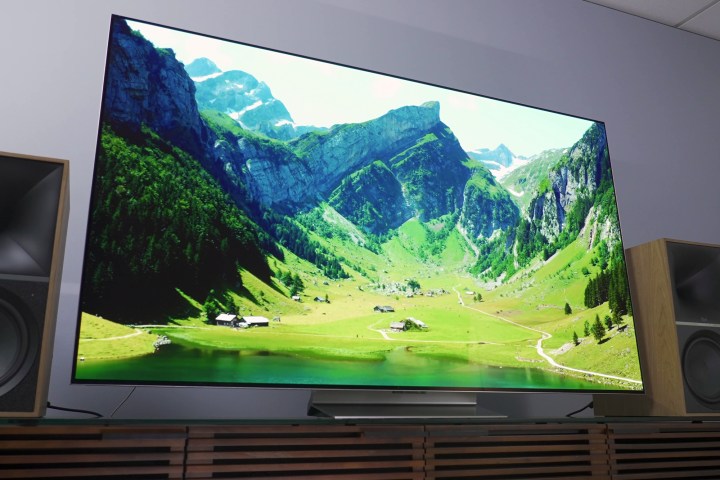
Zeke Jones / Digital Trends
LG G3 Series OLED
The runner-up
Pros
- Excellent overall brightness
- Dazzling contrast
- Clean, sharp images
- Good motion handling
- Excellent for gamers
Cons
- Disappointing sound
- Frustratingly cluttered UI
You know your premium TV means business when it’s too good to come with a stand. The terrific LG G3 OLED comes in 55-, 65-, 77-, and 83-inch sizes, and each of these large displays comes with a proprietary wall mount that gets the G3 nice and close to your living room wall. Why, you may ask? Because LG intends for this TV to be the aesthetic attention-grabber in your home (try displaying some artwork or family photos on the G3 screen), and we’re all about that.
The G3 is a next-gen reworking of the LG G2, and the latest version of the OLED is equipped with Micro Lens Array (MLA) technology, giving the G3 a significant boost in the brightness department. This year’s model also ups the processing game with the introduction of LG’s revamped a9 AI Processor Gen6, working in unison with LG’s Brightness Booster Max to deliver even sharper visuals.
OLEDs aren’t exactly known for arresting brightness, but the LG G3 is happy to challenge that preconception. That MLA backbone allows the G3 to achieve some of the best brightness levels of any TV for 2023, and that’s quite the achievement for a display that features no LEDs whatsoever.
The G3 also has four HDMI 2.1 inputs that max out at 4K at 120Hz. There’s support for pretty much all next-gen gaming must-haves, like VRR (variable refresh rate) and AMD FreeSync, and the TV handles HDR content like a champ. Plus, both the LG G3 and C3 models received DTS support this year, making both sets solid sound performers too (although you’ll always be better off with a soundbar or speaker system).

LG G3 Series OLED
The runner-up
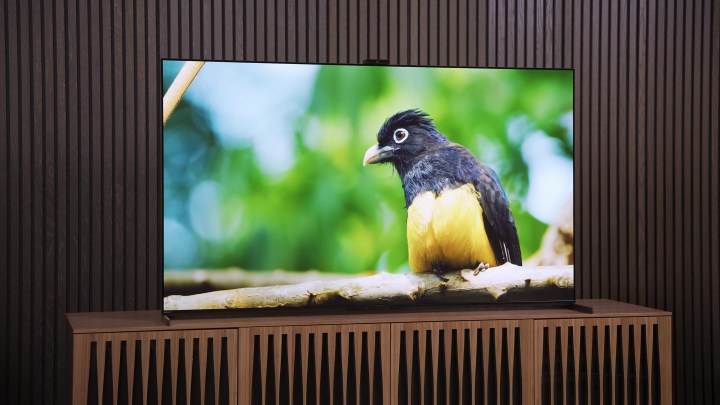
Zeke Jones / Digital Trends
Sony 65-inch XR A95L
The best OLED for videophiles
Pros
- Outstanding color accuracy and brightness
- Excellent contrast and luminance
- Great sound
- Gorgeous game mode picture quality
- Incredibly good upscaling
Cons
- Some deep features not available at launch
We walked away from our review of the Sony XR A95L as very happy campers. In fact, we awarded the latest Sony QD-OLED flagship a perfect five out of five stars. This TV is seriously good, and because we’re dealing with a QD-OLED display, there’s plenty of brightness, colors, and contrast perks, thanks to those onboard quantum dots. But we’re really just scratching the surface with those highlights; so let’s take a look under the hood.
As we’ve come to expect from most Sony sets, the formidable A95L is equipped with the company’s Cognitive Processor XR as the main brains behind the picture. Handling everything from frame-to-frame improvements and 4K upscaling, we’ve always been major fans of Sony’s picture engine, but when you combine the CPXR with the A95L’s native panel tech and XR Triluminos Max, you get movies, shows, and video games that look like they could leap right off the screen.
This is also the first of Sony’s QD-OLEDs to be equipped with the Pentonic 1000 HDMI chipset, which allows for Dolby Vision gameplay at up to 120Hz. That’s on top of other gaming features like VRR support and HDMI 2.1 connectivity.
As for the latter, only two of the TV’s four ports support the latest HDMI standard, and as our own Caleb Denison points out in his review, one of these ports is also the TV’s HDMI ARC/eARC port. This may pose a little trouble for those who may want to use the eARC connection for Dolby Atmos or HDMI CEC purposes, but one can always invest in an HDMI switcher if push comes to shove.
Beyond that one minor hitch though, the Sony A95L lives right on the cutting-edge of TV tech, and other manufacturers should definitely be taking notes.

Sony 65-inch XR A95L
The best OLED for videophiles
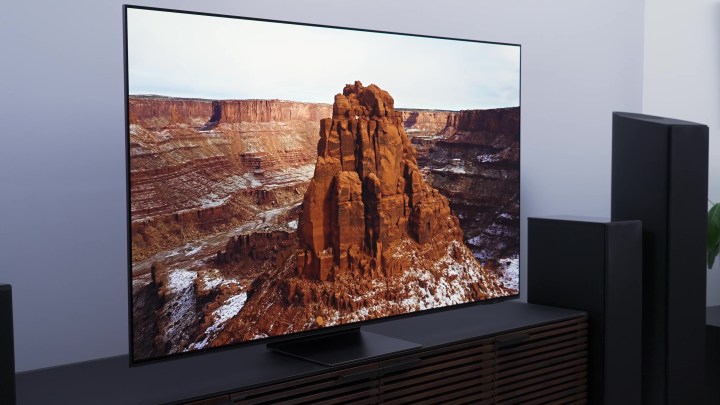
Zeke Jones/Digital Trends / Digital Trends
Samsung S95C QD-OLED
The best QD-OLED
Pros
- Incredibly bright colors
- Perfect black levels
- Pristine overall picture
- Great upscaling
- Awesome for gaming
Cons
- Mediocre sound
- No Dolby Vision support
The Samsung S95C rolls out the red carpet for another generation of Samsung’s amazing QD-OLED technology. For those unaware, this display combines the best parts of QLED lighting and quantum dots with the self-emissive pixels of an OLED panel. The end result? A vibrant picture with excellent color saturation and deep black levels — a videophile’s dream. Now as far as side-by-side comparisons go, the S95C is pretty close to the S95B, the 2022 version of the Samsung QD-OLED, but there are a few key differences.
For one, the S95C is now able to get up to 144Hz with all the appropriate PC connections. If you’re the kind of person who loves fast-action gameplay, the S95C has got you covered. Movie die-hards will still be capped at 120Hz motion, but Samsung’s Motion Xcelerator Turbo Pro returns for 2023, delivering some of the best 4K visuals for all your favorite action flicks and sporting events. That’s on top of Samsung’s Neural Quantum Processor for all your 4K upscaling needs, and the amazing Q-Symphony 3.0, which lets you pair compatible Samsung soundbars with the S95C speakers for an enhanced audio experience.
This time around, the S95C screen also delivers higher peak brightness than the S95B, and all of the TV’s inputs are housed on the Slim One Connect. You’ll also be able to stream all your favorite movies and TV shows through Samsung’s Tizen-powered Smart Hub, and access your many digitized Xbox games using Samsung Gaming Hub.
It might be a little more expensive than the competition, but the Samsung S95C is one of the best TVs you’ll have ever purchased — trust us.

Samsung S95C QD-OLED
The best QD-OLED

Sony / Sony
Sony 65-inch XR A80L
Another great Sony OLED
Pros
- Great picture quality
- Stunning HDR performance
- Google TV runs well
- Solid price
Cons
- Lower brightness levels for SDR content
- Only two HDMI 2.1 ports
- Not a QD-OLED
If we all had the money, each and every OLED fan would be buying a brand-new Sony A95L QD-OLED, but when forced to contend with reality (boo!), we must face the music: Not all of us can splurge on a flagship TV, but that’s why models like the Sony XR A80L are so good. Technically considered an entry-level set, this 2023 model isn’t a QD-OLED like its higher-priced sibling, the A95L. Instead, we’re dealing with a traditional WOLED panel that’s actually supplied by LG Display.
One of the most important things to think about when buying any new TV is how it’s going to look when displaying HDR-optimized content, as well as regular SDR sources. In the case of the Sony A80L, HDR content looks fantastic, with great peak and color brightness levels, as well as a wide color gamut and a near-perfect contrast ratio.
SDR performance isn’t half bad either, although you’ll definitely notice a drop in the brightness department. And even though the A80L does a nice job with reflection-handling, it may not be ideal for brightly lit rooms.
Under the hood though, Sony’s Cognitive Processor XR runs a good part of the show (just as it does on the flagship A95L), but without the aid of quantum dots for enhanced color saturation. Oh, and similar to the A95L, the A80L includes four HDMI ports, but only two of them are HDMI 2.1-certified; and one of these two ports is also the TV’s ARC/eARC connection. Come on, Sony!
Still though, if you’re looking to dive into the world of OLED TVs, but don’t want to spend upwards of $2,000 on an ultra-premium model, the Sony A80L is a solid middle-ground between lackluster entry-level sets we wouldn’t recommend to our worst enemies, and flagship displays that cost as much as a mid-2000s used Corolla.

Sony 65-inch XR A80L
Another great Sony OLED
Frequently Asked Questions
What is an OLED TV?
OLED stands for organic light-emitting diode, and its signature characteristic is that each pixel on the screen of an OLED TV emits its own light and color and can be turned completely off to deliver true black color.
OLED versus QLED: Which is better?
Be sure to check out our QLED versus OLED explainer. In general, OLED TVs produce a higher-quality image than QLED TVs, but there are caveats. QLED TVs get brighter, and so they’re the better choice for brightly-lit rooms.
Is OLED better than 4K?
Trick question! OLED is a description of a kind of TV display, whereas 4K refers to a TV’s native resolution. Like LED and QLED TVs, you can buy 4K and even 8K OLED TVs — the choice is yours.
What should I look for in an OLED TV?
f you’re a gamer, make sure your OLED TV supports HDMI 2.1 at the least, and in an ideal world, it should have Nvidia G-Sync and AMD FreeSync, too. If you’re a cinephile or video maven, find a model with the best picture processing.
Is OLED the best TV technology?
We think OLED TVs still currently produce the best overall image quality, but upcoming new formats such as QD-OLED, microLED and mini-LED-based QLED TVs are starting to threaten OLED TV’s crown.
Do OLED TVs have HDR?
Yes, all OLED TVs are compatible with at least HDR10 — the most common HDR format — while most offer support for HLG and Dolby Vision, too.
Do OLED TVs have problems with burn-in?
For the vast majority of buyers, burn-in will not be a problem, but it can happen. When it occurs, it’s usually because someone has set their OLED TV to show a TV channel or a video game that has on-screen graphics that don’t move much or at all and left it there for many hours each day, for many days in a row.
Who makes the best OLED TV?
Right now, all OLED TV panels are produced by LG Display, and we believe that LG Electronics makes the best overall OLED TV: the G2 Gallery Series. That said, Sony’s image processing is slightly better, so if image perfection is your main yardstick, a Sony OLED TV is a great way to go.
Is an OLED TV worth it?
Yes. OLED TVs are definitely expensive when compared to some other options, but their black levels, contrast, and color make for an awesome viewing experience.
Editors’ Recommendations






